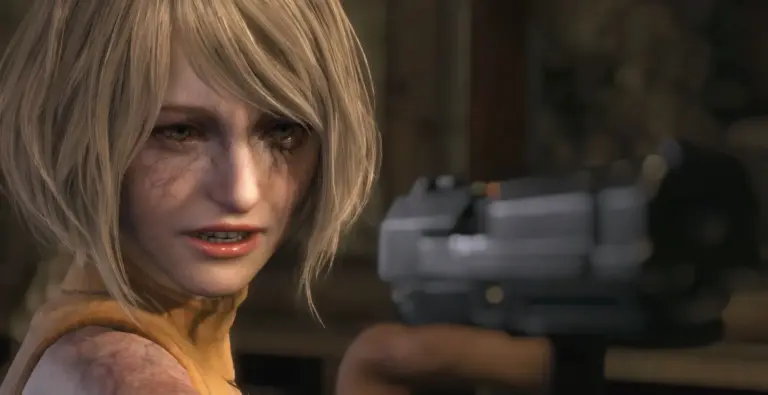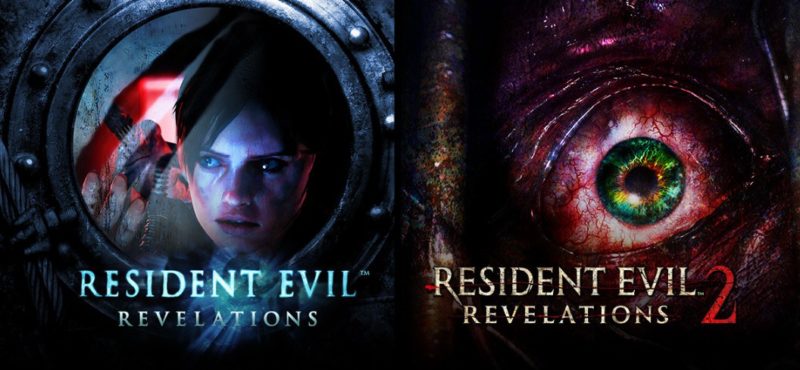
Finally, Resident Evil comes to Nintendo’s breakout system!
While there’s probably a pretty good chance the majority of you have already played Resident Evil: Revelations and its sequel on one of the many platforms they’ve released on, it’s nice to finally have at least something RE to play on the Nintendo Switch. Shooters, in general, have been pretty sparse on the system, with Splatoon and the recently released DOOM being the only other options. It’s exciting to have something like Resident Evil to play on my shiny new platform, and each surprised me in their translation to Switch’s unique features, for better or for worse.
The first game in this two-pack is, of course, the original 2012 Resident Evil: Revelations. While it’s been a fan favorite for years, I’ve always been mostly lukewarm on it. A strange mixture of horror-driven exploration and wave-based action makes the game feel off balance and unfocused (similar to that same year’s Resident Evil 6), and an unbelievably awful story with even worse characters made me fatigued with it very quickly. This feeling was exacerbated when it came to consoles for the first time, as I became less and less enchanted with the thrill of having a real, original portable RE game (Gaiden, The Mercenaries 3D and that awful GameCom demake of RE2 don’t count) being replaced with more or less having just a ho-hum console RE. I haven’t been back to the original Revelations since, and was quite surprised by how much fun I had revisiting the game on Switch.
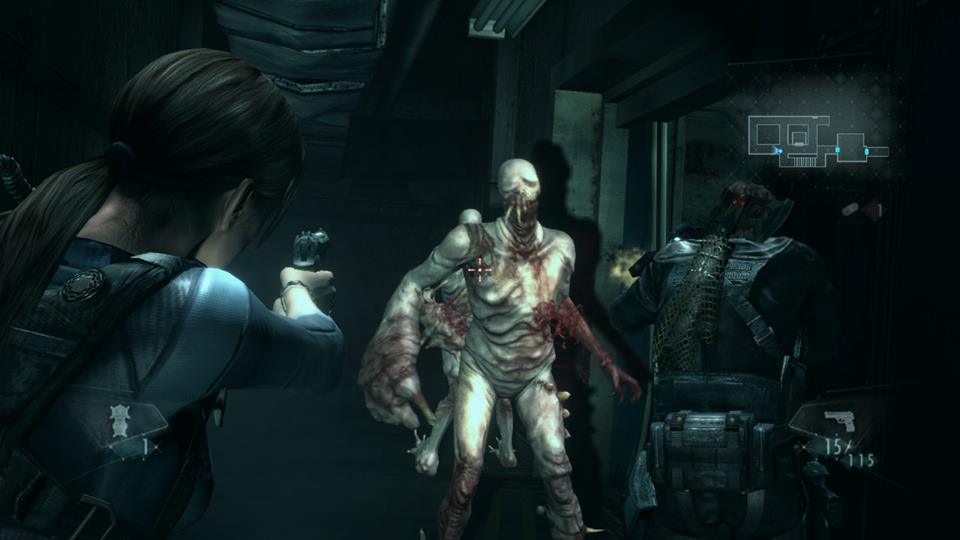
Upscaled to 1080p and running at a smooth 60fps, Revelations 1 becomes a new and more fluid experience with the addition of the Nintendo Switch’s gyro-based motion controls. Free aiming with the right JoyCon creates a new RE4 Wii Edition style gameplay experience, complete with waving the controller to swipe with your knife, shaking it to free yourself from an enemy’s grasp. It even controls Revelations’ unique item, the Genesis, which is used to discover hidden items. Personally, this really picked a game I previously didn’t care for up on its feet. It unifies the two halves of the game through the controls, whereas I previously felt like the horror-style controls fought against the action sections. I especially loved using the Genesis, which (because of the nature of the motion-based controls) creates a found-footage feeling to scanning enemies and looking for items as the camera jerks and bobs with your hand.
There is also a reloading feature that uses the Switch’s built-in IR-camera, but I found it to be somewhat unreliable, only working maybe once every three tries or so. The action required to activate it- mimicking the motions of sliding a clip into a pistol with both controllers- gets annoying in repetition, and it’s honestly just easier to press the reload button. It’s there if you want to use it, I guess, but I turned it off after about an hour of trying to use it. Luckily, you can choose to keep the other motion controls without the clumsy reloading gimmick.
One thing I was very surprised by was something that had nothing to do with the motion controls, but rather the two additional buttons on each JoyCon controller. When playing with the JoyCon controllers separated (rather than slid into the controller grip, or attached to the Switch itself), the player has access to two ‘grip’ buttons: SL and SR. Instead of just ignoring them like most of the other Switch games I’ve played, Revelations assigns your quick inventory to them. The left JoyCon’s SL and SR swap between your grenades, and the right JoyCon, your guns. Friends, this is a dream, as you otherwise have to swap weapons with the D-buttons. The grip feature is intuitive and easy to pick up, making it possible to swap weapons without the need to take your thumb off the movement stick, which in turn makes combat even faster and more fluid. This is especially helpful in the Revelations‘ series unique Raid Mode, which is a more RPG-inspired take on the classic Mercenaries game type from RE3-6.
The Switch version also adds in Amiibo support, although it sadly doesn’t do much – rewarding you with a few thousand BP (the currency used in Raid Mode). It’s apparently also supposed to award you with additional ammo during gameplay, but at the time of this review, the option appears to be missing from the in-game menu. I’m largely underwhelmed by the feature and wish that we could have at least gotten Resident Evil Amiibo figures. The other special addition is an 8-bit style scrolling shooter mini-game, which is … not that fun. It’s cute, I guess, and the chip-tune version of the game’s theme is neat, but it doesn’t do much more than give you a chance to grind some more BP outside of normal gameplay. Revelations 2 has one as well, a more or less direct clone of the first stage of NES classic Ghosts ‘n Goblins, but with special RE characters replacing Arthur and the enemies. It’s more involved but equally as forgettable.
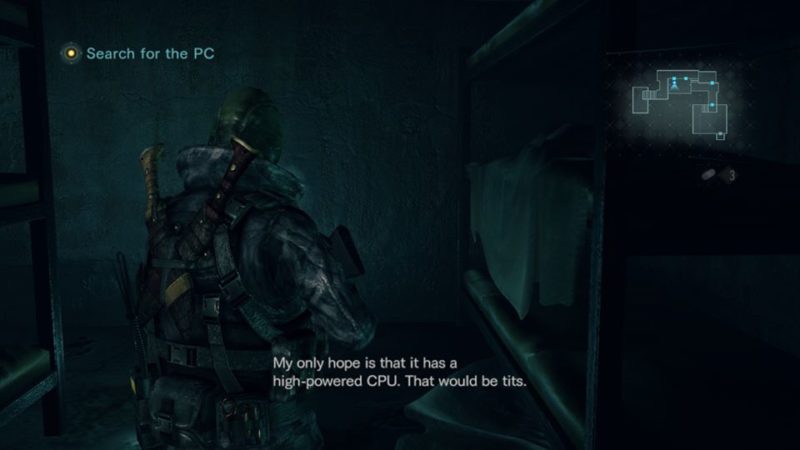
Overall, while I still can’t get past just how unspeakably awful the Revelations story itself is — even by Resident Evil standards — I was pleasantly surprised by how much fun I was having playing the game with the new controls. Outside of the controls, the game still has some great features, boasting incredible creature design and some of the best music in the series outside of the Outbreak games. Raid Mode shines as a great time-killer when playing in portable mode.
Oddly, the game that I was actually looking forward to playing, 2015’s Resident Evil: Revelations 2, ends up falling a little flat in this port. I loved this game when it came out; it feels like a spiritual successor to Resident Evil 4‘s blend of gritty horror, humor, and panic-based action. Unlike the original game, there are actually major Revelations regarding the overall RE universe in the second installment. Playing as fan-favorites Barry Burton and Claire Redfield pushed it over the edge into one of my favorite games in the recent style of the series. I’ve played it on several platforms, starting with PlayStation 3, upgrading to Xbox One, and even the utterly awful PlayStation Vita port (“downgrade” hardly covers that version’s problems), and was expecting something more or less on par with the current gen version from this release. To my surprise, it’s somewhere in-between last gen and current gen in almost every way, and the Switch features actually damage the experience in a way I wasn’t expecting.
Everything added to the first game is also available in the sequel, but the motion controls feel strangely over-sensitive, to the point of being a hindrance. Even the act of tapping a button to reload your gun makes your gun jerk violently across the screen, and trying to aim for weak points is incredibly difficult with how touchy the motion controls are. This becomes frustrating and nearly unplayable in the game’s wave-based sections where you have to clear out a room of enemies before being able to proceed, and eventually, I just gave up and turned the motion controls off. It’s the only reason I wanted this version; I don’t understand why they’re so unusable in comparison to the first game. Revelations 1 plays smoothly and steadily, with a pretty nice dead-zone for motion that helps with drawing a bead on an oncoming enemy. In Revelations 2, that’s nearly impossible, as even pressing buttons will completely throw your aim off.
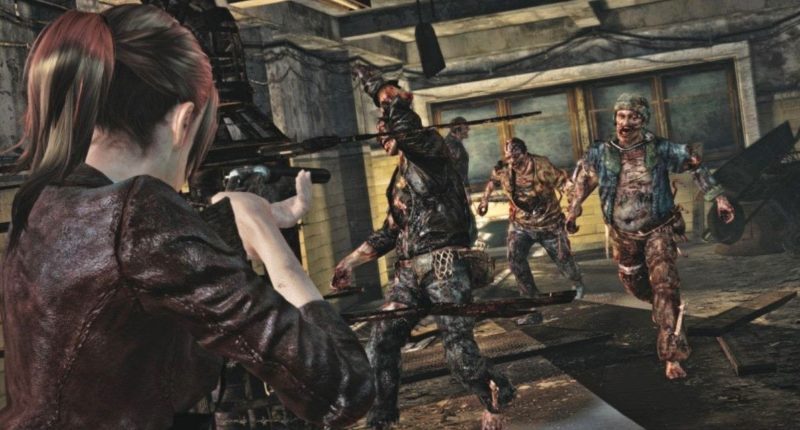
Another issue is just how different the two games controls are, as neither have a control scheme identical to each other. Revelations 2 suffers more for it, as that game’s controls are designed for a different kind of console. No control scheme allows for the A button to be the action prompt, forcing us to use the B button (which is in the same place as the A/X on other controllers). This wouldn’t be a huge issue, just a minor annoyance when switching between the two games, as Revelations 1 has the 3DS’ controls as default, which translates perfectly to the Switch’s identical layout. It does, however, create problems when trying to switch between gameplay and navigating menus. B becomes the cancel button in menus but is used as “OK” in every other situation. Combining items as enemies hunt you down, a feature unique to Revelations 2, is especially frustrating. Being able to make a firebomb bottle quickly is a major part of the game’s design, and accidentally closing out of the menu because you forgot that the “OK” button switched places is frustrating as all hell.
Revelations 2 also suffers from weird visual issues, all of which feels odd considering the power the Switch is packing. As best as I can tell, it’s running at 30fps, but there seem to be frames missing to try and make up for speed. When you walk, Claire’s hair and the hem of her jacket jitter and shake as if being animated in stop-motion. It’s distracting and looks awful. There’s also a ton of pop-in, especially with the foliage. Grass and tall stalks of wheat pop in suddenly as you get closer to them, and when hiding in bushes, all of the leaves (which will often fill the entire screen) have a weird black spotting around them as if their texture was incorrectly cut out of a PNG background. Colors also appear washed out, and the glistening effect added to rock textures appears as a ugly white speckling on some surfaces.
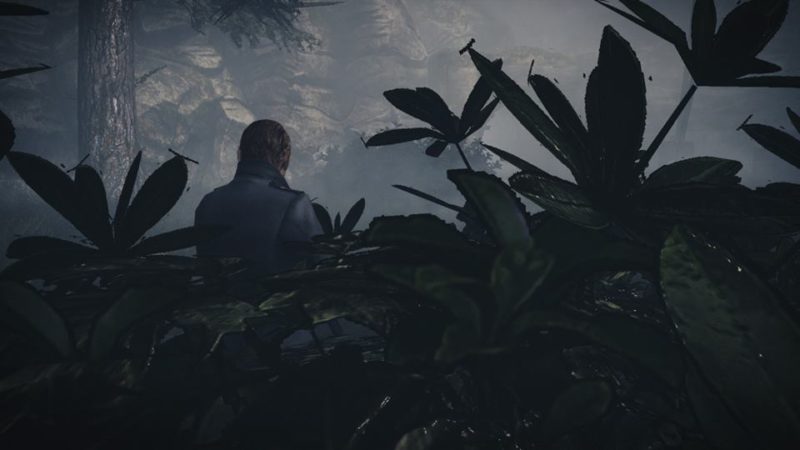
Lastly, like all versions of Revelations 2, the load times are simply awful. Waiting to play the game while staring at a black loading screen or the occasional Kafka quote stops all forward momentum dead in its tracks. It’s especially insidious in Revelations 2‘s version of Raid Mode, as there are at least three loading screens you’ll have to sit through before actually getting to play anything – loading the game itself, going from the main menu to the Raid Mode hub, and then to the actual gameplay of Raid Mode. It might not be as noticeable if it weren’t for directly comparing how quickly Revelations 1 loads, but it’s insufferable either way. When playing in portable mode, holy crap it feels like minutes of just sitting there, and the Switch’s battery life isn’t spectacular.
I still really love Revelations 2, and I’d argue it remains the better game of the two as a whole, but know going in that this version stumbles in quite a few places. It does come fully featured with all of the game’s DLC, and the opportunity to play a portable version that isn’t awful is positively a big plus. I’d recommend this version only to people who have either never played Revelations 2, are looking for a portable version, or RE nuts like me who just have to own and experience every version.
As a whole, the two Revelations games are still worth your time to try out, and there’s no denying how exciting it is to finally have my favorite franchise (until Ace Attorney hits) on the Switch. Between the two, Revelations 1 handles the transition much more gracefully- possibly even becoming the best version of the game to play. It’s certainly how I’d like to play it again, despite still owning it on 3DS and 360. Revelations 2, however, is skippable if you already own it. It isn’t the worst version of the game, but there are way better ways to experience it. Pick it up only if you’re aching for more RE on Switch. Oh, it’s also more than double the size of the first game (12 GB for Revelations, 25 for Revelations 2), meaning that you won’t have enough space for both games if you buy them digitally. This probably can’t be helped given the constraints of the Switch cartridge, but just know there’s a chance you’ll have to buy a memory card to even play Revelations 2 if you already have too many games on your Switch. That said, I’m hoping we get more RE on the Switch soon. This is a great start, at least as far as the first Revelations is concerned.
Resident Evil: Revelations
 (8 / 10)
(8 / 10)
Great
 (8 / 10)
(8 / 10)Rely on Horror Review Score Guide
Resident Evil: Revelations 2
 (6 / 10)
(6 / 10)
Above Average
 (6 / 10)
(6 / 10)Rely on Horror Review Score Guide
Nintendo Switch Review codes were provided by the publisher.

 sisslethecat
sisslethecat
